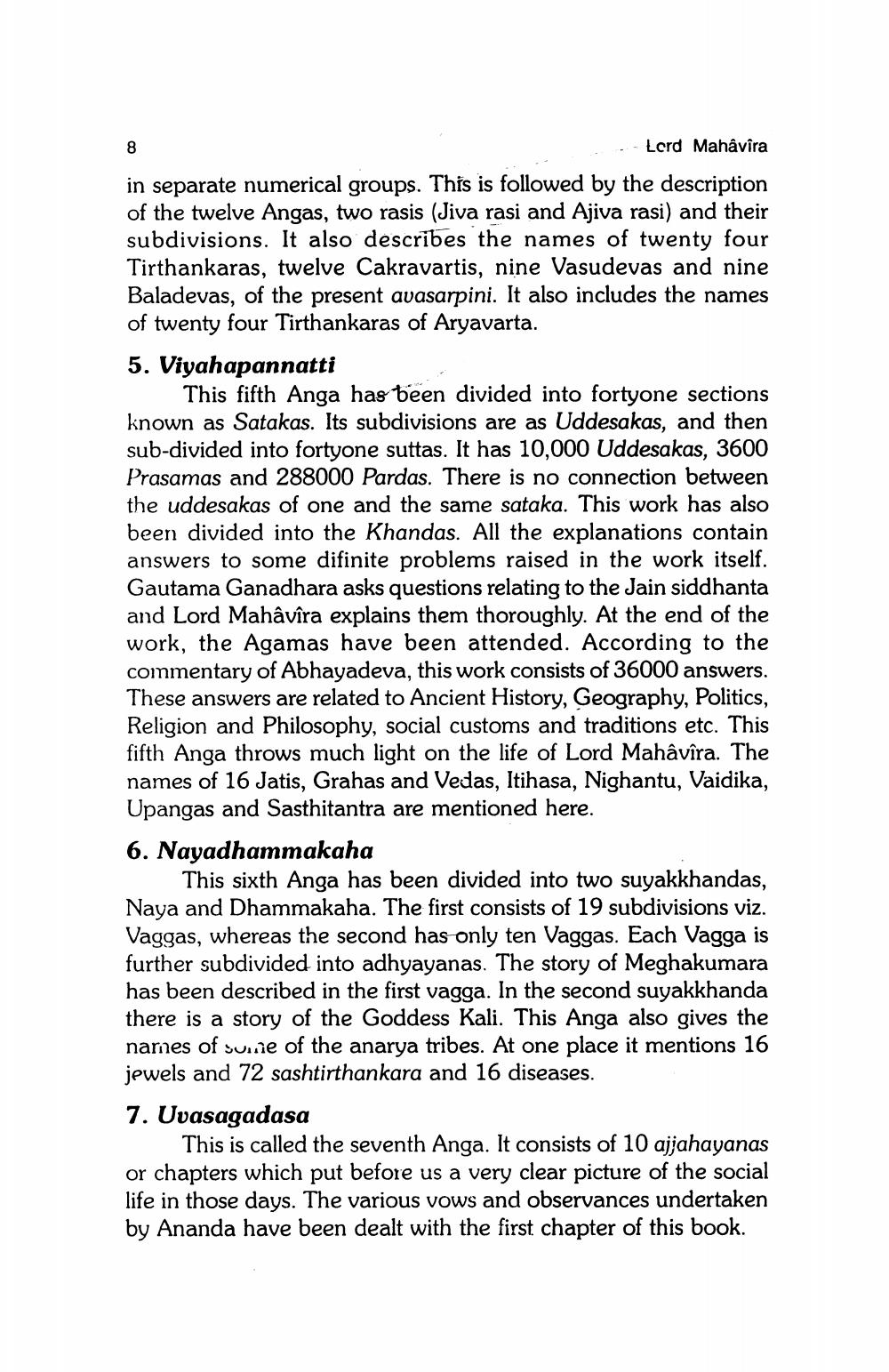________________
8
Lord Mahâvîra
in separate numerical groups. This is followed by the description of the twelve Angas, two rasis (Jiva rasi and Ajiva rasi) and their subdivisions. It also describes the names of twenty four Tirthankaras, twelve Cakravartis, nine Vasudevas and nine Baladevas, of the present avasarpini. It also includes the names of twenty four Tirthankaras of Aryavarta.
5. Viyahapannatti
This fifth Anga has been divided into fortyone sections known as Satakas. Its subdivisions are as Uddesakas, and then sub-divided into fortyone suttas. It has 10,000 Uddesakas, 3600 Prasamas and 288000 Pardas. There is no connection between the uddesakas of one and the same sataka. This work has also been divided into the Khandas. All the explanations contain answers to some difinite problems raised in the work itself. Gautama Ganadhara asks questions relating to the Jain siddhanta and Lord Mahâvîra explains them thoroughly. At the end of the work, the Agamas have been attended. According to the commentary of Abhayadeva, this work consists of 36000 answers. These answers are related to Ancient History, Geography, Politics, Religion and Philosophy, social customs and traditions etc. This fifth Anga throws much light on the life of Lord Mahâvîra. The names of 16 Jatis, Grahas and Vedas, Itihasa, Nighantu, Vaidika, Upangas and Sasthitantra are mentioned here.
6. Nayadhammakaha
This sixth Anga has been divided into two suyakkhandas, Naya and Dhammakaha. The first consists of 19 subdivisions viz. Vaggas, whereas the second has only ten Vaggas. Each Vagga is further subdivided into adhyayanas. The story of Meghakumara has been described in the first vagga. In the second suyakkhanda there is a story of the Goddess Kali. This Anga also gives the names of some of the anarya tribes. At one place it mentions 16 jewels and 72 sashtirthankara and 16 diseases.
7. Uvasagadasa
This is called the seventh Anga. It consists of 10 ajjahayanas or chapters which put before us a very clear picture of the social life in those days. The various vows and observances undertaken by Ananda have been dealt with the first chapter of this book.




